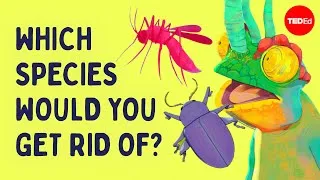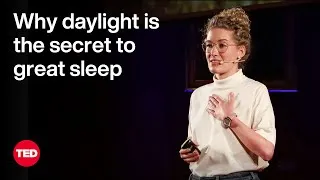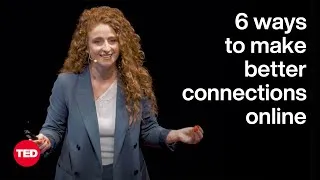請雙擊下方英文字幕播放視頻。
譯者: Dennis Lin
審譯者: Yung Hsiang Tseng
00:15
All buildings today have something in common.
0
15260
4000
今天世界上的建築都有些相同之處
00:19
They're made using Victorian technologies.
1
19260
3000
他們都運用了維多莉亞時期所發展的技術
00:22
This involves blueprints,
2
22260
3000
像是藍圖的繪製
00:25
industrial manufacturing
3
25260
2000
使用工業製造出的建材
00:27
and construction using teams of workers.
4
27260
3000
以及許多的建築工人
00:30
All of this effort results in an inert object.
5
30260
3000
結果創造出來的卻是一個毫無"生氣"的物體
00:33
And that means that there is a one-way transfer of energy
6
33260
3000
這是一種單向的能源轉換
00:36
from our environment into our homes and cities.
7
36260
4000
把能源從大自然傳到我們的城市和家裡
00:40
This is not sustainable.
8
40260
2000
這一點也不符合永續發展的觀念
00:42
I believe that the only way that it is possible for us
9
42260
3000
我相信唯一的解決方法
00:45
to construct genuinely sustainable homes and cities
10
45260
3000
是把建築與自然環境結合
00:48
is by connecting them to nature,
11
48260
2000
建造出能永續使用的家和城市
00:50
not insulating them from it.
12
50260
3000
而不是把它們區隔開來
00:53
Now, in order to do this, we need the right kind of language.
13
53260
4000
因此,我們需要的是一種正確的"語言"
00:57
Living systems are in constant conversation
14
57260
2000
長久以來,生態系統和自然界
00:59
with the natural world,
15
59260
2000
不斷地透過新陳代謝
01:01
through sets of chemical reactions called metabolism.
16
61260
4000
來進行對話
01:05
And this is the conversion of one group of substances
17
65260
3000
也就是,一種物質轉換成另一種物質
01:08
into another, either through
18
68260
2000
或是
01:10
the production or the absorption of energy.
19
70260
3000
物質經過能量的吸收與作用而變成另一種物質
01:13
And this is the way in which living materials
20
73260
2000
這就是生命體如何以一個永續的方式
01:15
make the most of their local resources
21
75260
3000
來運用
01:18
in a sustainable way.
22
78260
3000
所需的資源
01:21
So, I'm interested in the use of
23
81260
2000
所以,我對於把能重複代謝的物質
01:23
metabolic materials for the practice of architecture.
24
83260
5000
運用到建築科技上非常有興趣
01:28
But they don't exist. So I'm having to make them.
25
88260
2000
但這種物質目前並不存在,所以,我打算創造它
01:30
I'm working with architect Neil Spiller
26
90260
2000
我和英國巴特列特建築學院的建築師
01:32
at the Bartlett School of Architecture,
27
92260
2000
史畢樂先生
01:34
and we're collaborating with international scientists
28
94260
2000
還有其他科學家合作
01:36
in order to generate these new materials
29
96260
2000
從零開始
01:38
from a bottom up approach.
30
98260
2000
研發這種新的材料
01:40
That means we're generating them from scratch.
31
100260
2000
也就是說,我們將是研發這類材料的先驅
01:42
One of our collaborators is chemist Martin Hanczyc,
32
102260
4000
化學家Martin Hanczyc也是我們團隊中的一員
01:46
and he's really interested in the transition from
33
106260
3000
他對於這種物質轉換的研究
01:49
inert to living matter.
34
109260
2000
非常有興趣
01:51
Now, that's exactly the kind of process that I'm interested in,
35
111260
3000
談到要研發永續材料
01:54
when we're thinking about sustainable materials.
36
114260
2000
是我非常樂見的
01:56
So, Martin, he works with a system called the protocell.
37
116260
5000
所以,Martin採用了一種名為"原生細胞"的系統
02:01
Now all this is -- and it's magic --
38
121260
3000
這彷彿就像魔術一樣-
02:04
is a little fatty bag. And it's got a chemical battery in it.
39
124260
3000
在這個圓圓胖胖的袋狀物裡,裝著一個化學電池
02:07
And it has no DNA.
40
127260
3000
它並不具有DNA
02:10
This little bag is able to conduct itself
41
130260
2000
這個小小的袋狀物能夠自行運作
02:12
in a way that can only be described as living.
42
132260
3000
就像是有生命一樣
02:15
It is able to move around its environment.
43
135260
3000
它能夠自己在環境中移動
02:18
It can follow chemical gradients.
44
138260
2000
或是跟隨化學梯度移動
02:20
It can undergo complex reactions,
45
140260
3000
它也能通過複雜的化學反應
02:23
some of which are happily architectural.
46
143260
4000
它們對於建築非常有幫助
02:27
So here we are. These are protocells,
47
147260
2000
這些原生細胞
02:29
patterning their environment.
48
149260
2000
能夠仿造他們所在的環境
02:31
We don't know how they do that yet.
49
151260
3000
我們目前還無法得知他們是如何做到的
02:34
Here, this is a protocell, and it's vigorously shedding this skin.
50
154260
4000
這個原生細胞,它正在脫離他的表皮
02:38
Now, this looks like a chemical kind of birth.
51
158260
2000
有點像小孩出生一樣
02:40
This is a violent process.
52
160260
3000
是一個非常激烈的程序
02:43
Here, we've got a protocell to extract carbon dioxide
53
163260
3000
這邊是一個能夠從大氣中把二氧化碳抽離出來的
02:46
out of the atmosphere
54
166260
2000
原生細胞
02:48
and turn it into carbonate.
55
168260
2000
之後,二氧化炭將會被轉換成碳酸鹽
02:50
And that's the shell around that globular fat.
56
170260
2000
而這些就是球狀物邊緣的硬殼
02:52
They are quite brittle. So you've only got a part of one there.
57
172260
3000
他們非常的脆,所以我們能夠弄到的並不多
02:55
So what we're trying to do is, we're trying to push these technologies
58
175260
3000
現在我們研究的,就是對這項科技
02:58
towards creating bottom-up construction approaches
59
178260
2000
發展出由下到上的建築技術
03:00
for architecture,
60
180260
2000
並且應用在建築上
03:02
which contrast the current, Victorian, top-down methods
61
182260
3000
這跟目前採用這種維多莉亞式由上而下
03:05
which impose structure upon matter.
62
185260
3000
加強結構的方法並不一樣
03:08
That can't be energetically sensible.
63
188260
3000
因為這並不符合永續的概念
03:11
So, bottom-up materials
64
191260
2000
所以,由下到上的材料
03:13
actually exist today.
65
193260
2000
確實存在
03:15
They've been in use, in architecture, since ancient times.
66
195260
3000
這種材料早在古代就已被使用在建築上過
03:18
If you walk around the city of Oxford, where we are today,
67
198260
3000
在英國的牛津
03:21
and have a look at the brickwork,
68
201260
2000
他們牆上使用的磚
03:23
which I've enjoyed doing in the last couple of days,
69
203260
2000
和我最近做的事不謀而合
03:25
you'll actually see that a lot of it is made of limestone.
70
205260
2000
你可以看見他們大量使用了石灰岩
03:27
And if you look even closer,
71
207260
2000
再靠近一點看
03:29
you'll see, in that limestone, there are little shells
72
209260
2000
你可以看見石灰岩中的殼
03:31
and little skeletons that are piled upon each other.
73
211260
3000
還有一些殘骸堆積在裡面
03:34
And then they are fossilized over millions of years.
74
214260
3000
隨著時間,它們現在都已成了化石
03:37
Now a block of limestone, in itself,
75
217260
2000
這些石灰岩本身
03:39
isn't particularly that interesting.
76
219260
3000
並不是甚麼特別有趣的東西
03:42
It looks beautiful.
77
222260
2000
雖然它看起來美極了
03:44
But imagine what the properties of this limestone block might be
78
224260
4000
但想想這些石灰岩磚的特性
03:48
if the surfaces were actually
79
228260
2000
如果它們的表面
03:50
in conversation with the atmosphere.
80
230260
3000
和空氣有接觸的話
03:53
Maybe they could extract carbon dioxide.
81
233260
3000
他們或許就能吸收二氧化碳
03:56
Would it give this block of limestone new properties?
82
236260
3000
這些沉積物能賦予石灰岩新的價值嗎?
03:59
Well, most likely it would. It might be able to grow.
83
239260
3000
非常有可能.它能夠生長
04:02
It might be able to self-repair, and even respond
84
242260
2000
自我修復或是對周圍環境的
04:04
to dramatic changes
85
244260
2000
立即變化
04:06
in the immediate environment.
86
246260
2000
能夠有反應
04:08
So, architects are never happy
87
248260
3000
但建築師對這些一塊塊的東西
04:11
with just one block of an interesting material.
88
251260
3000
當然還不滿足
04:14
They think big. Okay?
89
254260
2000
他們想要的還不只是如此
04:16
So when we think about scaling up metabolic materials,
90
256260
3000
提到增加能夠代謝的材料時
04:19
we can start thinking about ecological interventions
91
259260
2000
我們先考慮生態干預
04:21
like repair of atolls,
92
261260
2000
像是修復珊瑚礁
04:23
or reclamation of parts of a city
93
263260
3000
和城市中曾經
04:26
that are damaged by water.
94
266260
2000
遭受水災的地方
04:28
So, one of these examples
95
268260
2000
這些例子
04:30
would of course be the historic city of Venice.
96
270260
3000
就跟威尼斯一樣
04:33
Now, Venice, as you know, has a tempestuous relationship with the sea,
97
273260
4000
和海有著密不可分的關係
04:37
and is built upon wooden piles.
98
277260
2000
而且威尼斯整個城市是建築在木頭上的
04:39
So we've devised a way by which it may be possible
99
279260
3000
所以我們想出了一個計畫
04:42
for the protocell technology that we're working with
100
282260
2000
就是使用原生細胞的科技
04:44
to sustainably reclaim Venice.
101
284260
3000
來修復威尼斯
04:47
And architect Christian Kerrigan
102
287260
2000
而建築師Christian Kerrigan
04:49
has come up with a series of designs that show us
103
289260
2000
已經有了一連串的設計
04:51
how it may be possible to actually grow a limestone reef
104
291260
3000
來告訴我們要如何在威尼斯底下
04:54
underneath the city.
105
294260
2000
種植石灰岩礁
04:56
So, here is the technology we have today.
106
296260
3000
這就是我們現今所擁有的
04:59
This is our protocell technology,
107
299260
2000
原生細胞科技
05:01
effectively making a shell, like its limestone forefathers,
108
301260
4000
有效率地生產石灰岩上的那些沉積物外殼
05:05
and depositing it in a very complex environment,
109
305260
3000
並把它們放置在複雜的環境中
05:08
against natural materials.
110
308260
2000
對抗自然的素材
05:10
We're looking at crystal lattices to see the bonding process in this.
111
310260
3000
我們現在看的是水晶晶格的結合過程
05:13
Now, this is the very interesting part.
112
313260
2000
這是一個非常有趣的部分
05:15
We don't just want limestone dumped everywhere in all the pretty canals.
113
315260
3000
我們不要只是把石灰岩丟在威尼斯美麗的運河裡
05:18
What we need it to do is to be
114
318260
2000
我們要做的是
05:20
creatively crafted around the wooden piles.
115
320260
4000
讓它們圍繞著水底下的木頭
05:24
So, you can see from these diagrams that the protocell is actually
116
324260
2000
你可以從這些圖中看見原生細胞正在
05:26
moving away from the light,
117
326260
2000
遠離光源
05:28
toward the dark foundations.
118
328260
2000
朝著深色的底座靠近
05:30
We've observed this in the laboratory.
119
330260
2000
我們在實驗室中就觀察出了這點
05:32
The protocells can actually move away from the light.
120
332260
3000
原生細胞是有趨光性的
05:35
They can actually also move towards the light. You have to just choose your species.
121
335260
3000
但也有些不同種類的原生細胞是有向光性的
05:38
So that these don't just exist as one entity,
122
338260
2000
他們不只是以一種實體的狀態存在
05:40
we kind of chemically engineer them.
123
340260
3000
我們利用化學工程改良他們
05:43
And so here the protocells are depositing their limestone
124
343260
3000
原生細胞沈積在石灰岩上
05:46
very specifically, around the foundations of Venice,
125
346260
3000
有目標地包覆著威尼斯的底座
05:49
effectively petrifying it.
126
349260
2000
使底座更堅固
05:51
Now, this isn't going to happen tomorrow. It's going to take a while.
127
351260
4000
但這不是一蹴可及的.我們還需要一段時間
05:55
It's going to take years of tuning and monitoring this technology
128
355260
4000
我們可能還需要幾年的時間做觀察並且調整
05:59
in order for us to become ready
129
359260
2000
接著才能
06:01
to test it out in a case-by-case basis
130
361260
2000
在威尼斯受損的建築上
06:03
on the most damaged and stressed buildings within the city of Venice.
131
363260
3000
測試
06:06
But gradually, as the buildings are repaired,
132
366260
3000
等到建築物漸漸被修復之後
06:09
we will see the accretion of a limestone reef beneath the city.
133
369260
3000
我們將看到石灰岩礁和城市的底座附著在一起
06:12
An accretion itself is a huge sink of carbon dioxide.
134
372260
4000
這整個沈機物會是由一大塊固體狀的二氧化碳組成
06:16
Also it will attract the local marine ecology,
135
376260
3000
而且還會使附近的海洋生態
06:19
who will find their own ecological niches within this architecture.
136
379260
4000
趨於穩定
06:23
So, this is really interesting. Now we have an architecture
137
383260
3000
這非常的有趣.我們有一座城市
06:26
that connects a city to the natural world
138
386260
3000
能夠與大自然
06:29
in a very direct and immediate way.
139
389260
2000
有最直接的關連
06:31
But perhaps the most exciting thing about it
140
391260
3000
但最讓人感到興奮的
06:34
is that the driver of this technology is available everywhere.
141
394260
3000
莫過於驅動這項科技的元素都處都可以找的到
06:37
This is terrestrial chemistry. We've all got it,
142
397260
3000
那是現在地球上現有的,要取得它們完全不成問題
06:40
which means that this technology is just as appropriate
143
400260
3000
這意味著,這像科技不但適合在
06:43
for developing countries as it is
144
403260
2000
開發中國家使用
06:45
for First World countries.
145
405260
2000
也適合在已開發的國家中使用
06:47
So, in summary, I'm generating metabolic materials
146
407260
3000
總而言之,我正在開發這種能夠代謝的素材
06:50
as a counterpoise to Victorian technologies,
147
410260
3000
來和維多莉亞式的科技取得平衡
06:53
and building architectures from a bottom-up approach.
148
413260
3000
並以一個下到上的方式應用到建築上
06:56
Secondly, these metabolic materials
149
416260
2000
第二,這些代謝材料
06:58
have some of the properties of living systems,
150
418260
2000
存在著一些生物的特質
07:00
which means they can perform in similar ways.
151
420260
3000
他們和生物有些相似處
07:03
They can expect to have a lot of forms and functions
152
423260
3000
應用到建築上
07:06
within the practice of architecture.
153
426260
2000
它們能夠有各種不同的型式與功能
07:08
And finally, an observer in the future
154
428260
3000
最後,當未來的人
07:11
marveling at a beautiful structure in the environment
155
431260
3000
對這些美麗的建築讚嘆不已時
07:14
may find it almost impossible to tell
156
434260
3000
將分不出來
07:17
whether this structure
157
437260
2000
這個建築
07:19
has been created by a natural process
158
439260
2000
是自然生成的?
07:21
or an artificial one.
159
441260
2000
還是人造的?
07:23
Thank you.
160
443260
2000
謝謝!
07:25
(Applause)
161
445260
4000
掌聲
New videos
關於本網站
本網站將向您介紹對學習英語有用的 YouTube 視頻。 您將看到來自世界各地的一流教師教授的英語課程。 雙擊每個視頻頁面上顯示的英文字幕,從那裡播放視頻。 字幕與視頻播放同步滾動。 如果您有任何意見或要求,請使用此聯繫表與我們聯繫。







